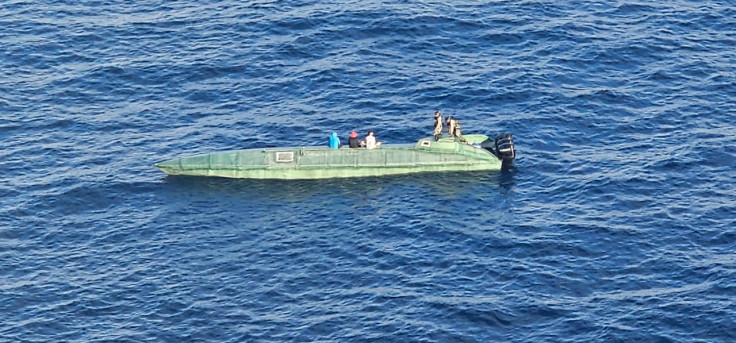
Six men accused of attempting to smuggle drugs into the United States using a "narco sub" have been sanctioned by the Treasury Department.
Four of the men come from Guyana, while the remaining two hail from Colombia. They were sanctioned for allegedly trafficking tons of cocaine into the country, as well as Europe and the Caribbean.
In a statement, officials said the ring had the help of an alleged corrupt Guyanese law enforcement official. "The sanctions also target individuals that are operating covert airstrips to traffic drugs via aircraft," the document added.
"For decades, reported corrupt actors have used Guyana as a transshipment point for the movement of drugs from South America to the United States, with Mexican drug cartels also maintaining a presence in the region," the department's Office of Foreign Assets Control (OFAC) said.
The entity noted that Guyana's geographic location, along with "alleged corruption along its ports and borders, allows aircraft and maritime vessels, also known as narco-submarines, to transit through its waters undetected."
OFAC illustrated the claim with specific incidents. In March, it said, a "cargo vessel originating in Guyana was discovered by police in the waters of Trinidad and Tobago with approximately 182 kilograms of cocaine." The cargo was divided in packages stamped with the Toyota logo, which OFAC said is a "known trademark of the Sinaloa Cartel."
In late May, authorities in Colombia also seized more than six tons of cocaine following an operation involving the seizure of a "narco sub." In a video posted on X, members of the Colombian Navy can be seen intercepting the semi-submersible vessel off Colombia's Pacific coast. Officials also discovered two underground hiding places where a criminal cell had stashed approximately 270 kilograms of cocaine.
Though commonly referred to as "narco subs," these vessels are not actual submarines and cannot fully submerge. Instead, they are designed to sit extremely low in the water, making them difficult to detect.
Low-profile vessels (LPVs) are typically constructed from wood and fiberglass—materials that are difficult to spot on radar—and are painted to blend in with ocean waters. According to the Colombian Navy's International Center for Research and Analysis Against Maritime Drug Trafficking (CIMCON), the estimated cost of building one of these vessels is about $150,000.
A near-record number of narco subs were intercepted crossing the Atlantic and Pacific oceans in 2024, according to InSight Crime. The vessels have also begun appearing in new maritime zones across both oceans.
© 2025 Latin Times. All rights reserved. Do not reproduce without permission.





